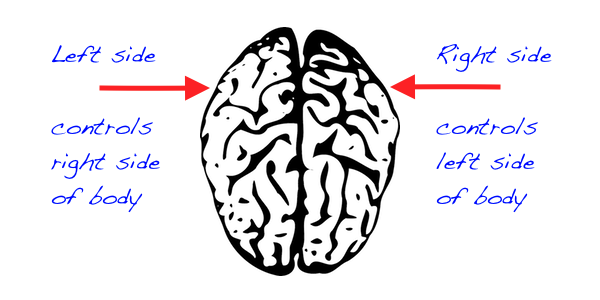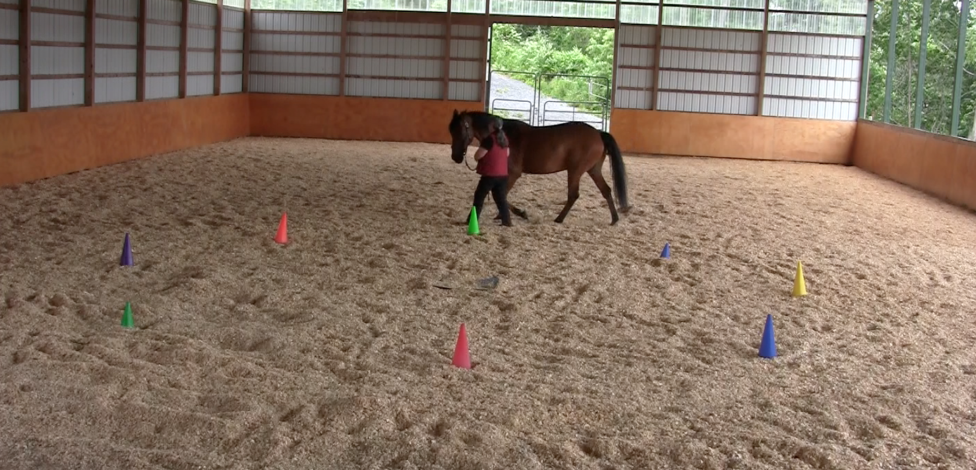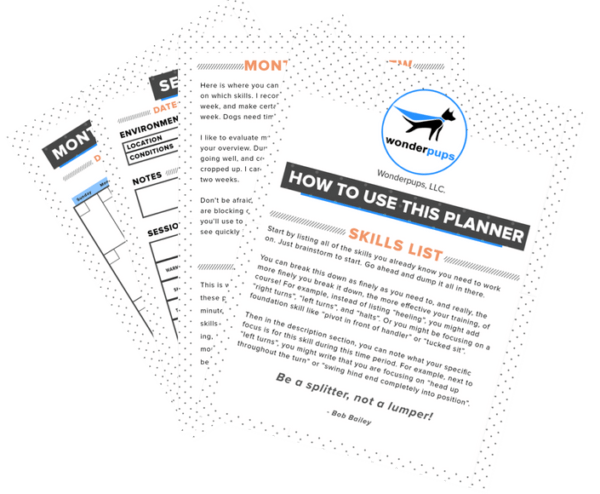This started out as a short post, but somehow got away from me. #SorryNotSorry.
TLDR version: Strive for equilibrium (I like that word better than “balance”), and teachers should (at least occasionally), put their money where their mouth is.
Really, this is all Alex Kurland’s fault. We both share an obsession, err, love, for the nerdy details of behavior and movement. Yay! A kindred spirit! Behavior nerds unite!
While she works primarily with horses, she has taught (and retaught) me so many things that I use every day in my teaching and training, and I am forever grateful. She often inspires me to look at dogs’ behaviors and actions from a different perspective. And basically question everything.
Conversations with Alex tend to lead me into deep, dark rabbit holes. And I’m as bad as Rugby when it comes to walking away from a rabbit hole. (Check out her blog if you want to join me down here. The weather’s lovely.)
We’d been talking some time ago about collection and balance, the similarities and differences between dogs and horses, and how we can use clicker training to effectively teach these skills.
This topic is particularly relevant to me now, as I am just wrapping up my newest crop of online Skill Building students. As many of you know, in all of my skills classes, I strongly encourage (force) the teams to teach pivoting and bending behaviors on not one, but BOTH sides. And there is always a little bit of predictable angst over the subject. Why does it even matter, since we’ll only ever heel on one side? (Why does everyone rule out freestyle right off the bat? A mistake if you ask me!)
Here’s the thing: Straightness is a dynamic steady state. It’s not a thing in itself, it’s a balance between left and right.
So if we want straight heeling, straight fronts and finishes, etc, we have to give our dogs the skills to balance the left and right sides. More important than fronts and finishes, these are skills that will keep our dogs safe, sound, and healthy throughout their careers.
So what’s the deal?
Dogs, like humans, horses, and all other mammals, have a two-hemisphere brain, with different parts of the brain in charge of different functions. Because of this, dogs, like humans and horses (and I assume llamas and armadillos, etc) have dominant sided tendencies. This has nothing to do with pack structure, but it explains why you are stronger on one side of your body, and tend to prefer to write with a particular hand, etc. Dogs also have a stronger side/direction, and will tend to prefer to turn one way or the other, and be more comfortable pivoting one way than the other. We both tend to be more flexible on one side, and stiffer on the other. And our habits exacerbate that tendency.

Habitually using one side of the body continues to strengthen the strong side, and the weaker side atrophies from disuse. It’s both a physical and mental issue. Anyone who has done a full day of household chores while carrying a baby or toddler, will recognize how lopsided our activities tend to be. The longer we go through life, the larger the imbalance becomes. Unless we act consciously to change it.
So this is particularly relevant when it comes to training our dogs. But when I say we should train each side to balance (or equilibrium), I don’t necessarily mean train each side for exactly the same amount of time, or the same number of minutes. There are both behavioral and physiological elements in play here. Turning to the weaker side may definitely be unfamiliar, but it may also be uncomfortable. So it’s not simply a motivational issue. There are soft tissues that need time to gain flexibility and muscles need a chance to strengthen, in order for the dog’s body to work smoothly in both directions. We have to meet the dog where he is.
This usually translates to having smaller/lower criteria for the weaker side. The objective is to strengthen that behavior/circuit as we do everything else… by successive approximation.
So on my dog’s stronger side, he may be able to smoothly do a full pivot (usually counterclockwise) with good form and technique. But on his weaker side (usually clockwise), I may be clicking and reinforcing for just small weight shifts in the right direction. As usual, it’s more important to have the right muscles activating to give us the action we need, then to simply achieve the outcome of having the dog make it around the platform.
That can be REALLY hard, since we all tend to get very outcome focused. Tremendous self-control is required on the part of the trainer!
So this is what’s running through my mind as I get my own dogs out. And I think, hey, I should probably take a good look at where these guys are in this.
When I take that time to observe- I realize we all have a lot of work to do!
In this session, I started Rugby out on his stronger side… counterclockwise. This is the direction we work most frequently, because it is most used in left-sided heeling. So it gets practiced a lot, even in small ways not on the platform, because even when just loose leash walking, I usually have him on my left.
He is able to pretty smoothly and quickly complete a full pivot to the left, several times! When I switch to working on his right side (clockwise pivot), I have to *dramatically* lower my criteria. You can see how quickly he flips his head to the left, ready to shift his weight and pivot counterclockwise. In fact, I first start out by simply clicking him for standing still on the platform and Not Pivoting Counterclockwise. From there, I am able to reinforce small weight shifts and then a few small steps to the right. But at about 50s, I am a bit slow and miss a click, and he quickly starts to spin counterclockwise again. Doh! Fortunately we get back on track after that, and I quit before I dig myself a hole.
We’ll continue to work both sides for our homework, so that he learns to balance himself and use his body freely in both directions. I have high aspirations for this little pup, and I want him to easily be able to find a straight front and balanced heel position (we are also working hard on his collected trot, but that’s a whole ‘nother post or twelve there) AND I want him to stay sound and healthy for many years to come!

